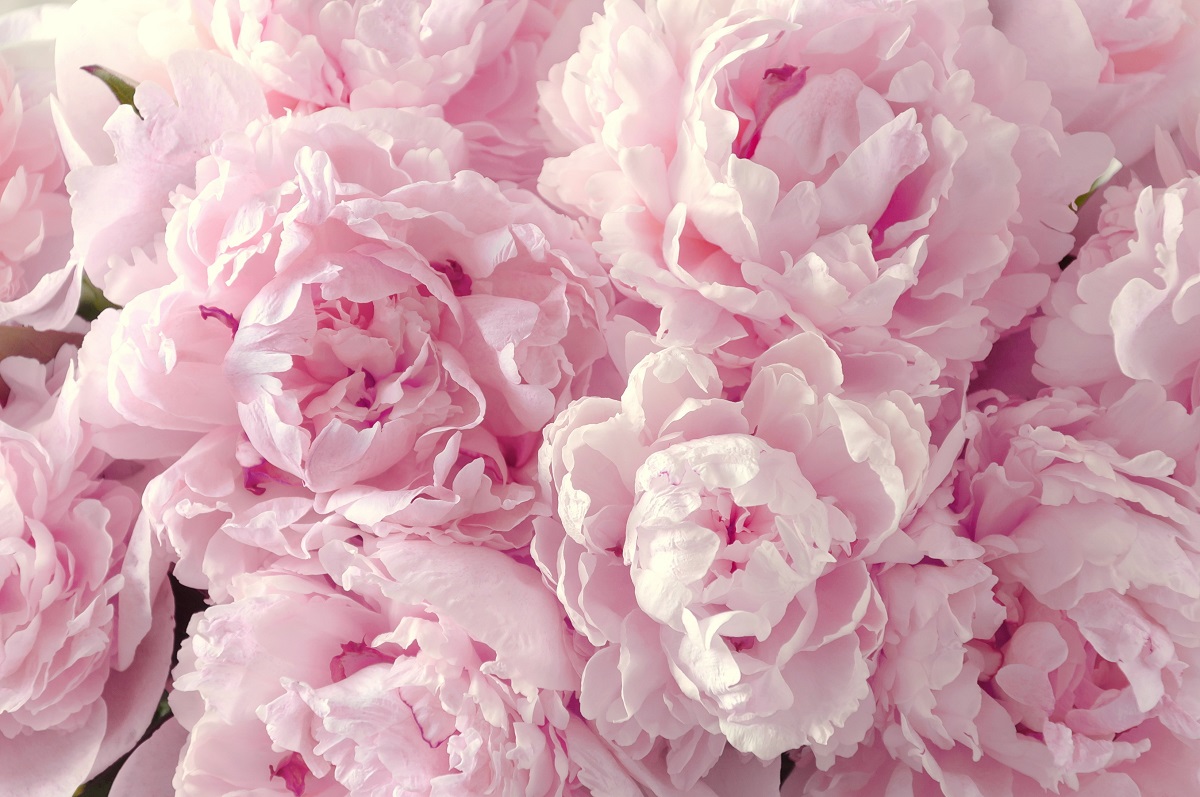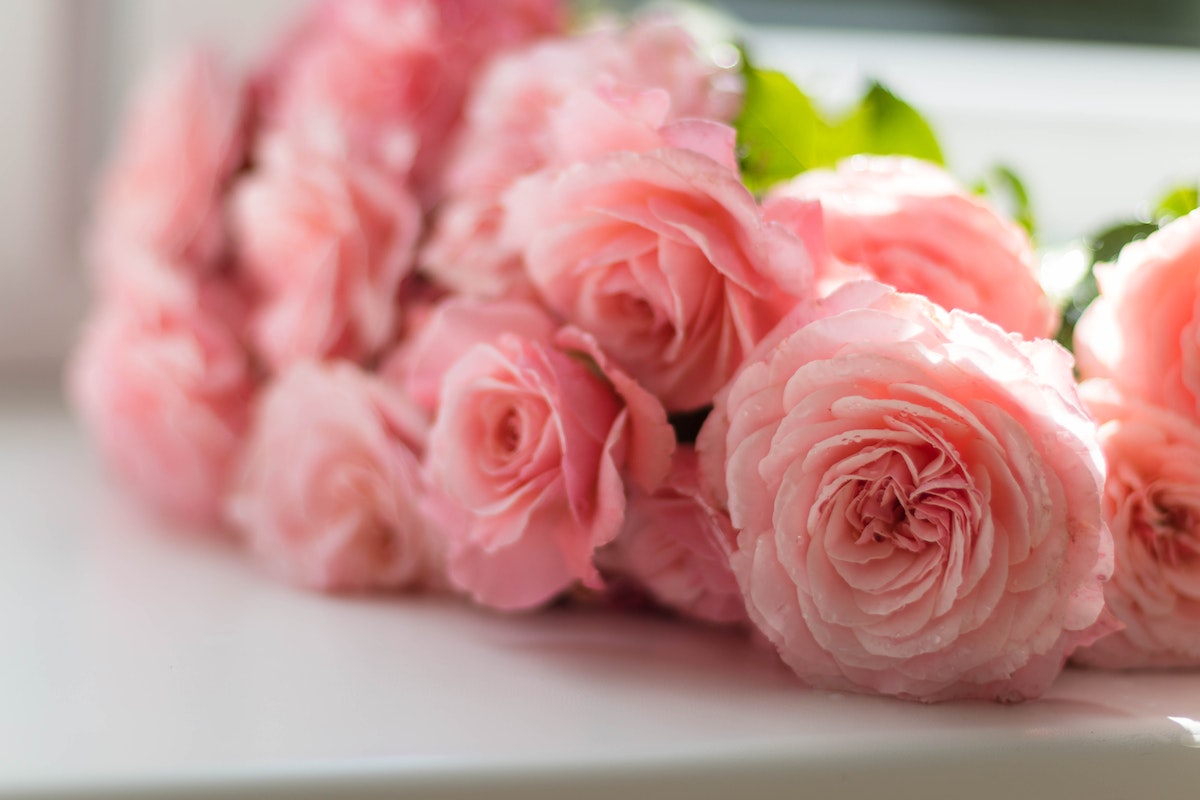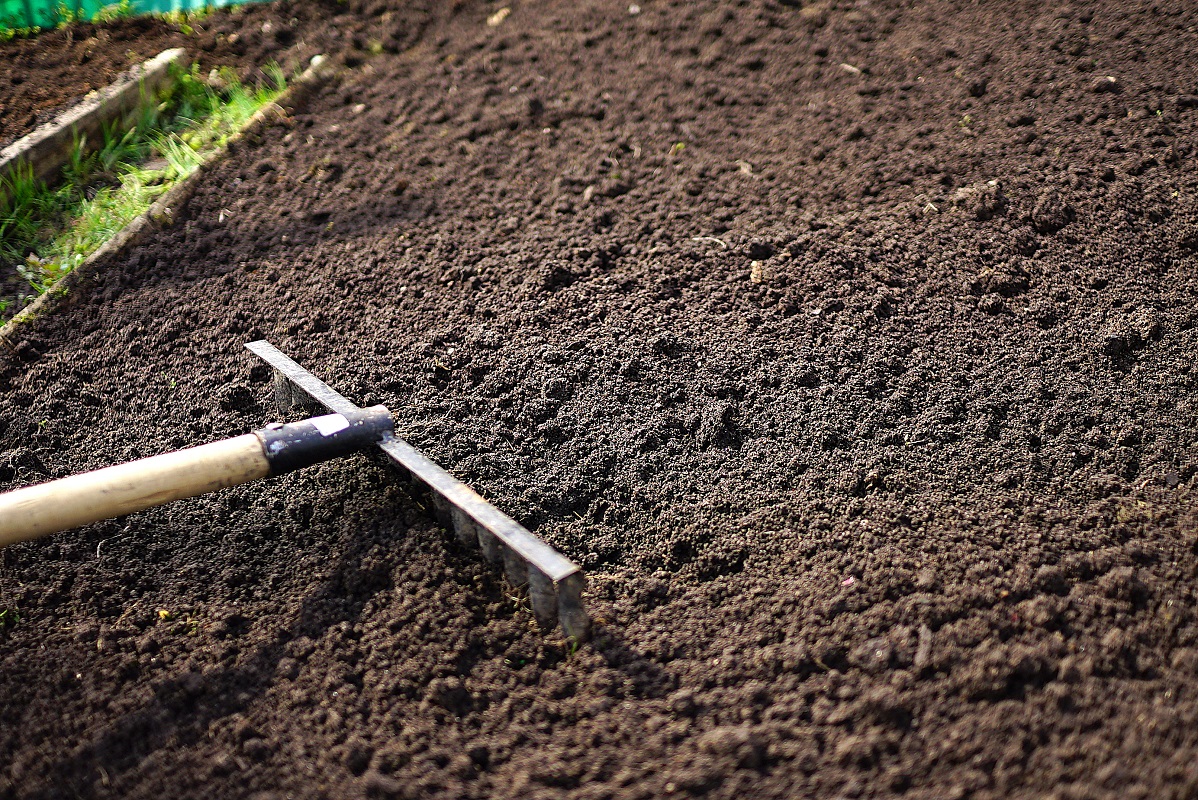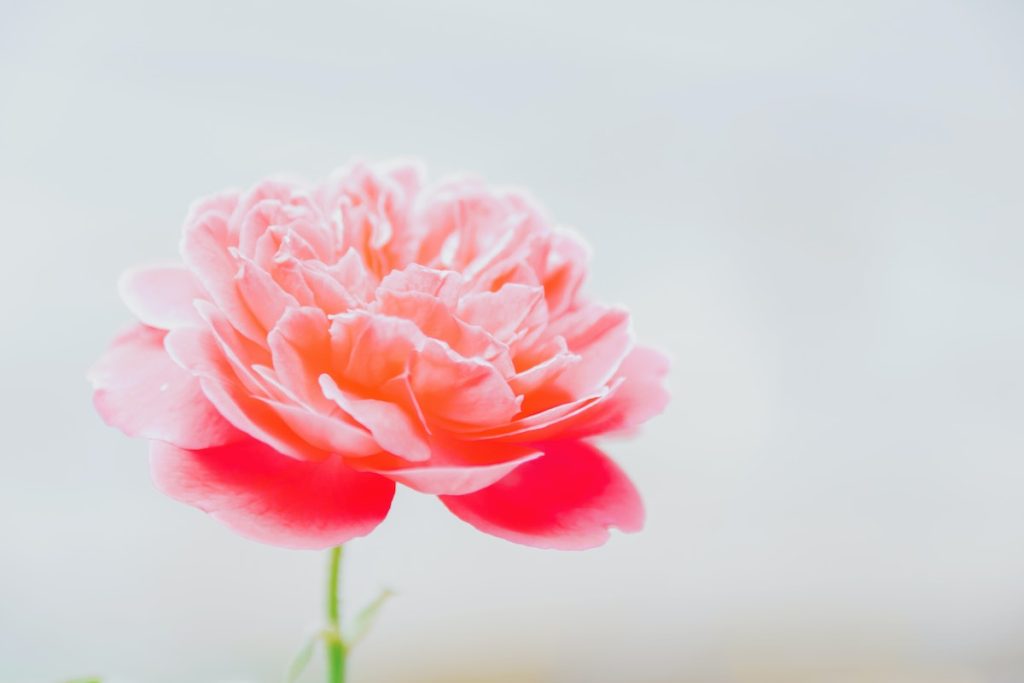Introduction

Peonies are beloved flowering plants, often the star of gardens and landscapes due to their stunning blooms. Prized for their large, luscious petals, and enchanting fragrance, peonies can bring a dramatic flair to any setting. The process of planting these radiant beauties starts with their roots. Understanding how to plant peony roots correctly is crucial to nurturing these captivating blooms and having them grace your garden year after year.
A Historical and Cultural Glimpse at Peonies
Peonies boast a rich history that stretches back thousands of years and pervades various cultures around the globe. In China, where peonies are considered the national flower, they’ve been cultivated for over 2,000 years and symbolize prosperity, love, and honor. Known as the “King of Flowers,” peonies were once exclusive to the imperial palaces, illustrating their esteemed status.
In Japanese culture, peonies represent bravery and honor, often depicted in traditional tattoos. In the West, particularly in Victorian England, peonies were cherished for their lush, voluminous blooms, signifying bashfulness and compassion. These vibrant flowers continue to captivate gardeners worldwide, connecting people to a deep-rooted cultural legacy while adding a touch of historical elegance to modern gardens.
This guide provides comprehensive information about peonies, from their historical and cultural significance to the detailed process of planting and nurturing them. The first section delves into the historical backdrop of peonies, exploring their cultural relevance in various societies. The ensuing sections will articulate the meticulous process of planting peony roots, offering clear, step-by-step instructions to ensure your peonies flourish from the get-go. Finally, the guide will share crucial care tips, providing insights into maintaining the health and vibrancy of your peony plants. The primary objective is to equip you with sufficient knowledge about peonies, paving the way for a rewarding gardening experience.
Peony Plant History
Peony plants trace their roots back to ancient civilizations, predominantly in China and Greece, where they held significant cultural and medicinal value.
The Origin of Peonies in China
Peonies have been highly esteemed in China since antiquity, regarded as a symbol of prosperity, love, and honor. They were first cultivated as medicinal plants during the Sui and Tang dynasties, around 1,400 years ago. The peonies’ roots, seeds, and flowers were used in traditional Chinese medicine for their anti-inflammatory and analgesic properties. Peonies gradually transitioned from medicinal use to ornamental cultivation as their aesthetic appeal became more recognized. By the time of the Song dynasty, peonies had achieved the status of “national flower,” and their cultivation became a subject of art and literature.
The Significance of Peonies in Ancient Greece
In Greek mythology, the peony is associated with Paeon, a student of Asclepius, the God of Medicine. When Paeon used a peony root to heal Pluto, the God of the Underworld, he sparked the jealousy of Asclepius. Pluto transformed him into a peony flower to protect Paeon, which is how the plant got its name. Beyond myth, peonies were used in ancient Greek medicine. The roots were used to relieve night-time seizures, and the seeds were believed to aid childbirth.
These historical accounts demonstrate peonies’ rich and varied heritage, underscoring their importance in ancient cultures and their enduring presence in modern gardens.
Symbolism and Cultural Associations of Peonies

Due to their beauty and symbolism, Peonies have long been revered in art and literature. Their enchanting presence has been captured in numerous works of art throughout centuries, including paintings, ceramics, textiles, and literature.
In Chinese art, peonies are a popular and recurring theme. They are often depicted as significant, lush blooms, symbolizing wealth, honor, and high social status. In fact, during the Tang Dynasty, peonies were so strongly associated with the imperial court that they were often referred to as the “flower of riches and honor.” This fascination with peonies permeated the era’s literature, with many poems and songs dedicated to their beauty and splendor.
In Japanese ukiyo-e or woodblock prints, peonies are frequently paired with Japanese lions, symbolizing a combination of courage and elegance. They also feature prominently in Japanese tattoo art, representing wealth, elegance, and prosperity.
Western art equally appreciates peonies. In the language of flowers, a Victorian-era means of communication where various flowers and floral arrangements were used to send coded messages, peonies symbolized bashfulness and feelings of shame or embarrassment. They were often featured in bouquets for their aesthetic appeal and gentle fragrance. In literature, they are frequently used as metaphors for beauty, often associated with female beauty.
Thus, peonies have inspired artists and poets from various cultures with their rich color palettes ranging from white and pale pinks to deep reds and maroons. Their symbolism extends beyond physical beauty, incorporating cultural and societal values and beliefs. This cross-cultural appreciation for peonies further enhances their universal appeal and enduring popularity in gardens around the world.
Tracing the Cultivation of Peonies Across Different Countries
- Peonies in Europe
Peonies were introduced to Europe through trade routes, with the earliest documented appearances in medicinal texts during the Middle Ages. Their medicinal use was widespread in various European cultures, with roots, seeds, and even petals used for their therapeutic properties. The transition from medicinal plants to ornamental flowers occurred gradually, prompted by their stunning blooms and fragrant aroma.
In England, the cultivation of peonies gained momentum during the Victorian era. They were a favorite among gardeners for their lush foliage and extravagant blooms. The Victorians associated peonies with bashfulness, their voluminous, blushing blooms making them popular in Victorian gardens.
- Peonies in North America
The peony made its way to North America with the early settlers. The plant arrived in the New World as a medicinal herb but soon found favor as an ornamental plant due to its beauty and hardiness. American gardeners admired the peony for its resistance to most pests and diseases, its ability to thrive in diverse climates, and its magnificent, long-lasting blooms.
In the early 19th century, the peony began appearing in horticultural exhibitions and garden catalogs. It quickly gained popularity, and by the late 1800s, peonies were a common sight in American gardens. The American Peony Society was formed in 1903, signaling the peony’s status as a cherished staple of American horticulture.
- Peonies in Japan
Peonies were introduced to Japan from China around the eighth century. They quickly became popular, featuring traditional Japanese art such as ukiyo-e and tattoo designs. The Japanese admired the peony’s elegance and beauty, symbolizing prosperity and bravery.
Japanese horticulturists have significantly contributed to peony cultivation, developing numerous cultivars and hybrids. Japan is also known for its unique method of growing peonies under trees, known as “tree peonies,” which has resulted in a whole new variety of globally admired peonies.
Through centuries, peonies have journeyed across continents, entwining themselves in the fabric of diverse cultures and societies. Today, they stand as a testament to the universal admiration of beauty, enriching gardens across the globe with their stunning blooms and fragrant presence.
How To Plant Peony Root
When propagating peonies, the most reliable and standard method involves using their roots. Peony roots, or tubers, are a powerhouse of energy that can give birth to new plants under suitable conditions. With an eye or growth bud present, each division of a peony root can potentially develop into a full-blooming plant. This makes peony roots an excellent choice for gardeners seeking to expand their array of these mesmerizing blooms. The following sections delve deep into planting peony roots, offering step-by-step guidance to ensure a successful propagation.
Selecting the Right Peony Root
The journey to a thriving peony bloom starts with root selection. Choosing high-quality peony roots from a reliable source is vital to ensure healthy growth and stunning blooms.
Peonies come in three main varieties: herbaceous, tree, and intersectional, each with unique root structures.
- Herbaceous Peonies – Herbaceous peonies, also known as garden peonies, are the most common. They die back to the ground in winter and re-emerge in spring. Their roots are tuberous, composed of primary roots and secondary lateral roots. The roots are starchy and thick, with multiple eyes (buds) on the crown of the root that will turn into stems in the spring.
- Tree Peonies – Unlike herbaceous peonies, tree peonies are woody shrubs that lose their leaves in the fall but leave their stems intact. They have a more complex root system with a grafting point that must be planted deep enough to allow the graft to develop its roots. The roots of tree peonies are woody and less fleshy compared to herbaceous peonies, with fewer eyes.
- Intersectional Peonies – Intersectional peonies, also known as Itoh peonies, are a hybrid of herbaceous and tree peonies. They have the best characteristics of both parents, sporting large, vibrant blooms from tree peonies and herbaceous peonies’ foliage, growth habit, and root system. Like herbaceous peonies, the root system of intersectional peonies is tuberous with multiple eyes on the crown.
Understanding the varieties of peonies and their respective root structures is essential for successful planting and care. It will guide you on the proper planting depth and care requirements for each variety, ensuring your peonies survive and thrive in your garden.
Securing healthy peony roots from a trusted source is critical in planting peonies. Healthy roots are the foundation of a thriving plant and will ultimately determine the quality and abundance of your blooms. When purchasing peony roots, there are several factors to consider:
- Source: Always purchase peony roots from a reputable nursery or supplier. They are likely to provide high-quality roots free from diseases and pests. Make sure to verify the nursery’s credibility by checking customer reviews, ratings, and any awards or recognitions they might have received in the horticulture field.
- Root Health: The roots should be firm and plump, not shriveled or soft. They should be free of mold, rot, visible disease, or pest damage signs.
- Eyes: The number of eyes on a root indicates the plant’s potential growth. A high-quality root should have at least three to five well-defined eyes. These eyes are the growing points from which the stems will emerge, so more eyes mean more potential stems.
- Root Size: The size of the root clump also matters. A larger root will give your peony a head start, resulting in a stronger plant and more blooms in the first few years. However, even a smaller root can catch up in growth with proper care and favorable conditions.
- Variety and Origin: Ensure that the nursery provides information about the specific variety and origin of the peony. This information will help you understand the plant’s care requirements and growth habits.
Remember, a healthy root is an investment in your garden’s future, and choosing the right one can set your peony up for years of stunning blooms.
Preparing the Planting Site

Preparing the planting site is the next crucial step in the process. Peonies are sun-loving plants that thrive in well-drained soil, making the location and soil preparation key to their success.
- Assessing Sunlight and Soil Requirements for Peonies.
Peonies require full sun; at least six hours of direct sunlight is ideal for optimal blooming and growth. When choosing the planting site, consider the availability of natural sunlight and how this might be affected by shade-producing structures or plants. If necessary, strategically prune shrubs or trees to allow more light to reach the area.
Soils should be well-draining and nutrient-rich to support healthy root growth. Peonies prefer slightly acidic soils (pH 6.0 – 7.5). The ideal soil structure is loose, airy, and friable with a good mix of organic matter like compost or manure. Test your soil pH levels before planting to ensure they are in the correct range.
- Soil Preparation and Amendments to Ensure Good Drainage and Fertility.
Peonies are moderately heavy feeders that require fertile, nutrient-rich soil for healthy growth. To prepare the planting site:
- Remove weeds and dig down 12 to 18 inches to loosen the soil.
- Mix a balanced fertilizer into the loosened soil thoroughly before replanting.
- If your soil is clay-based or prone to waterlogging, add a soil amendment like perlite or gravel to improve drainage.
Planting Process
- Timing for Planting Peony Roots
Fall is the ideal time to plant peony roots when temperatures are cooler and soil moisture is plentiful. Planting when the weather is warm enough for the soil to be worked by hand but cool enough for the roots to remain dormant will ensure a good start for your plants.
- Digging the Planting Hole
When the soil is adequately prepared, you can dig the planting hole. The hole should be wide and deep enough to accommodate the root system without bending or crowding it. Typically, the hole should be 1.5 to 2 times the width of the root and deep enough so that the top of the root, where the buds or “eyes” are located, will be just 1-2 inches below the soil surface.
- Spacing Multiple Roots
Spacing is crucial if you’re planting multiple peony roots. Proper spacing ensures that each plant has adequate room to grow and flourish without competing for resources. Generally, peonies should be planted three to four feet apart in the center. This spacing allows for ample air circulation, reducing the risk of fungal diseases, and gives each plant enough room to mature into a sizeable shrub.
- Placing and Positioning the Root in the Hole
After preparing the planting hole, it’s time to position the peony root. The root should be placed horizontally in the hole, with the eyes (buds) pointed upwards. Carefully spread out the roots so they aren’t crowded or twisted. The crown of the root, where the eyes are located, should be positioned to be one to two inches below the soil surface after backfilling the hole. This depth is crucial for successful blooming; if planted too deep, the peony may produce lush foliage but few to no flowers.
For tree peonies, the graft union, identifiable as a bulge or knob on the trunk where the selected variety is grafted onto a rootstock, should be positioned 4-5 inches below the soil surface. This deeper planting encourages the grafted peony to develop its roots, making it stronger and more stable.
In summary, the planting process is a delicate balance of placing the peony root at the correct depth and orientation. Paying careful attention to these details will set the stage for a successful growth season, bringing you one step closer to enjoying the spectacular bloom of your peonies.
- Backfilling and Watering the Newly Planted Peony
Once the peony root is placed correctly in the planting hole, the next step is backfilling the hole with soil. Gently backfill the hole, carefully not to damage the root or the eyes, and ensure the root remains at the correct depth. Fill the hole until the surface of the soil is level with the surrounding ground, avoiding the creation of a raised mound or a depression. Press the soil gently around the root to remove any air pockets and ensure good contact between the soil and the root. However, do not compact the soil too tightly, which could hinder root growth and drainage.
After backfilling, watering is crucial to help the soil settle around the roots and to provide essential moisture to the root. Thoroughly water the root, ensuring the soil is moist but not waterlogged. It is important not to overwater, as excessive water can lead to root rot, a condition that can severely damage the peony. Keep the soil moist, but not waterlogged, for the first few weeks after planting to help the root establish itself.
Aim the water at the base of the plant to avoid wetting the foliage when watering. Wet foliage can create a favorable environment for fungal diseases.
In the first year after planting, your peony may not produce many flowers or may be smaller than expected. This is normal, as the plant invests energy in establishing a robust root system. You can expect a dramatic increase in blooms in the second and subsequent years with proper care.
To sum up, backfilling and watering are critical steps in planting peony roots. Executing these steps properly will help your newly planted peony establish a strong root system, setting the stage for a stunning display of blooms in your garden in the years to come.
Care For Peonies
Once your peonies are planted, providing adequate care to promote healthy growth and abundant blooms is crucial. Peonies are relatively low-maintenance plants but require diligent attention for optimal performance. The following sections will detail the essential elements of successful peony care.
Watering and Fertilizing
Watering your peonies appropriately is key to ensuring their healthy growth. Peonies prefer soil that is consistently moist but not waterlogged. Aim to water them deeply during the growing season once a week, soaking the soil to encourage deep root growth. In dry weather or drought, you may need to water more frequently. However, be cautious not to overwater as this can lead to root rot.
Fertilizing peonies can help them produce more vibrant and plentiful blooms. A balanced, slow-release fertilizer applied once a year in early spring can provide the nutrients necessary for vigorous growth. Follow the manufacturer’s instructions when fertilizing, and avoid using fertilizer directly on the plant’s stems or leaves to prevent burning.
Peonies also appreciate organic amendments. Adding compost or well-rotted manure to the soil can enhance its fertility and structure, promoting better growth. This can be done in the fall after the peonies have gone dormant or in the spring before new growth begins.
Remember, with both watering and fertilizing. It’s essential to strike a balance. Too little water or nutrients can hinder growth, but too much can be just as detrimental. Monitor your peonies closely throughout the growing season to ensure they receive the right care.
Pruning and Deadheading
Pruning and deadheading are also essential elements of successful peony care. When new foliage emerges in the spring, carefully remove any old leaves and stems that didn’t survive the winter. This will reduce the disease risk and improve air circulation around the plant.
Once blooming has been completed, practicing deadheading is essential, which removes spent flowers. Deadheading peonies help maintain the plant’s aesthetics and direct energy back into the plant for root and leaf development instead of seed production. To deadhead, cut off the flower at the top of the stem as soon as it fades. Be careful not to remove the leaves, as they continue to photosynthesize and provide energy for the plant. Regular deadheading keeps your peonies healthy and vigorous, setting the stage for a spectacular bloom display in the following season.
Disease and Pest Management
Ensuring the health of your peonies also involves vigilant disease and pest management. Like any plant, peonies can be susceptible to various diseases and pests, but their impact can be minimized with the right practices.
- Common Diseases: The most common diseases affecting peonies are fungi, including Botrytis blight and leaf spot. These diseases often manifest as discolored, wilting, or dead foliage and can be managed by maintaining good air circulation around the plant and proper watering practices. If you spot signs of disease, remove and destroy the affected parts of the plant to prevent it from spreading. In severe cases, following the manufacturer’s instructions, you might need to apply a suitable fungicide.
- Pest Control: Although peonies aren’t a significant magnet for pests, they can sometimes attract insects like thrips and scale. Regularly inspect your peonies for signs of pest damage, such as discolored leaves, visible insects, or a sticky residue on the leaves (honeydew). If pests are present, they can often be controlled with natural predators, hand removal, or insecticidal soaps or sprays.
- Preventive Measures: Good plant care is the best defense against disease and pests. By ensuring that your peonies are healthy – with proper watering, fertilization, pruning, and spacing – you’re providing them with the best defense against diseases and pests.
While peonies can be susceptible to certain diseases and pests, these issues can often be prevented or managed through careful practices and timely intervention. Paying attention to the health of your peonies and promptly addressing any signs of trouble are crucial to maintaining beautiful, healthy plants.
Supporting Peony Stems
Supporting peony stems is a critical aspect of maintaining these plants, as their lush, large flowers can sometimes be too heavy for the stems to support, causing them to droop or even break.
- Types of Supports
Several types of supports are available for peonies, including grow-through rings, grid supports, and single-stem supports. Grow-through rings and grid supports are ideal for bushy plants with multiple flowers. In contrast, single-stem supports are better suited for varieties that produce large, heavy flowers on individual stems. Peony cages, which are round wire cages encasing the plant, can also be used.
- When to Install Supports
The best time to install supports is in early spring, when the plants are just beginning to sprout. This allows the peonies to grow naturally through the supports, making them less noticeable and more effective.
- Installing Supports
Install the support over the plant, pushing the legs firmly into the ground. As the peony grows, the foliage will expand to fill the support. Ensure the supports are tall enough to support the mature plant adequately and are sturdy enough to withstand wind and the weight of heavy blooms. Adjust the height of the support if necessary as the plant grows.
- Maintaining Supports
Check the supports periodically throughout the growing season to ensure they function adequately. After the blooming season, you can leave the supports in place to help contain the foliage or remove them if desired. Supports should be stored in a dry, protected location during winter to prevent rust and damage.
By providing adequate support to your peonies, you’ll help them maintain an upright and attractive appearance throughout the growing season, ensuring that their beautiful blooms can be appreciated to their fullest.
Conclusion
Planting peony roots may seem daunting, but with the right knowledge and careful attention to detail, you can successfully cultivate these stunning plants in your garden. From preparing the planting hole and positioning the root to backfilling, watering, and providing ongoing care, every step is critical to ensure your peonies’ healthy growth and abundant blooming. Remember to maintain a balance in watering and fertilizing, conduct regular pruning and deadheading, manage any diseases or pests, and provide the necessary support for the stems. Patience and care will reward you with a beautiful display of lush peony blossoms that can make any garden a showpiece.





